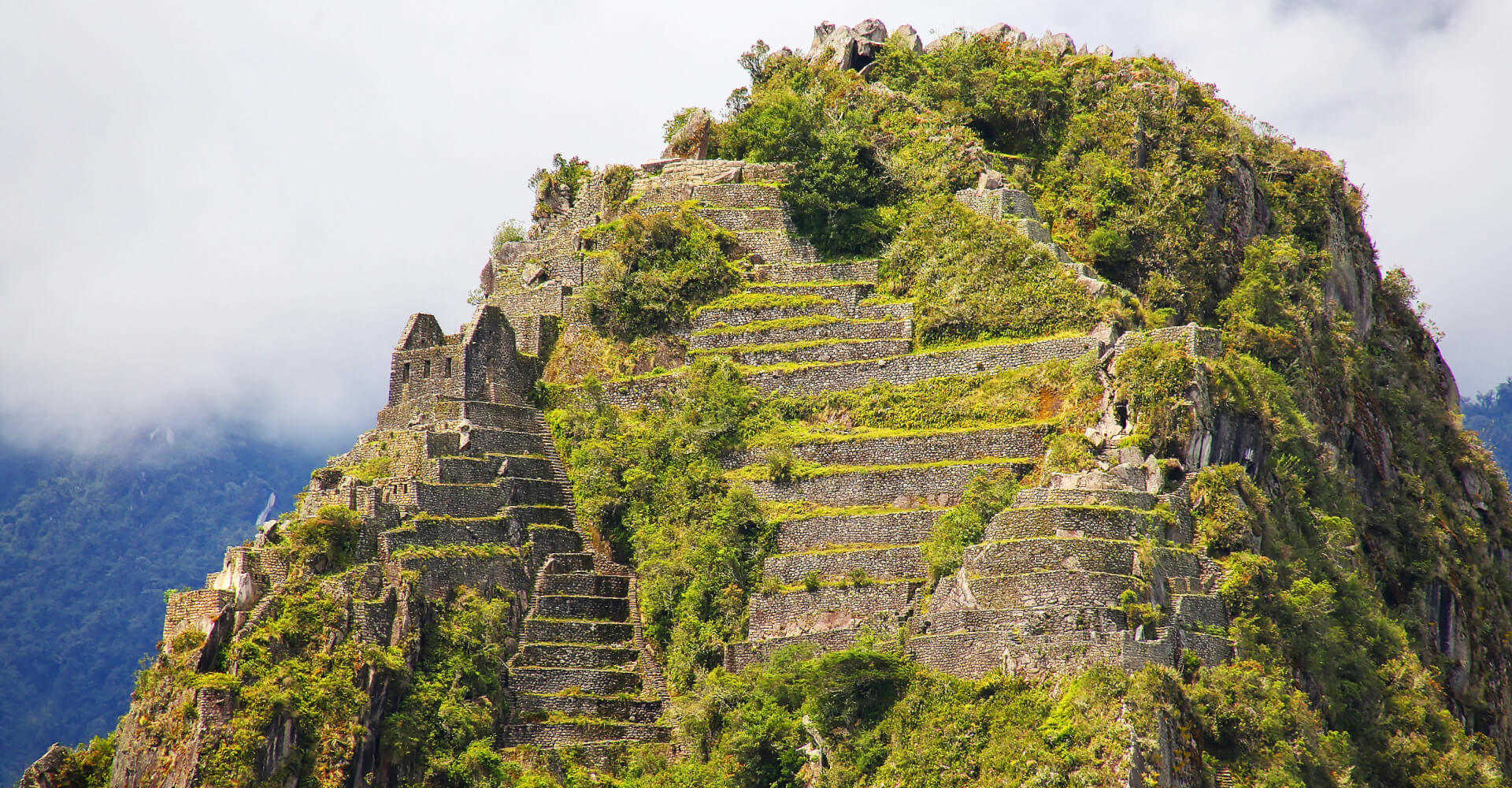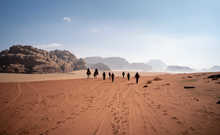Inca Trail - Lite
- Kandoo Lite
- Kandoo Trekking

Contact
our UK team


This evening you will meet your local Kandoo representative and have a full pre-trek briefing, at the Kandoo group hotel, to ensure you are prepared for the trek. You will need to arrange your own hotel accommodation in Cuzco for this night.
We will meet at the group hotel at 4:45am, ready to leave Cuzco at 5:00 am by a private bus heading to the Sacred Valley of the Incas. We will make a short break in the beautiful town of Ollantaytambo for breakfast. The official beginning of the Inca Trail is called Km 82. Here we will meet our crew and register for our trek.
After crossing the Rio Urubamba we start the legendary Inca Trail. The first day of the trail is relatively easy and a good warm up for the following days. On the way we will pass a beautiful archaeological site called Llactapata before we reach Tarayoc. After that, we will continue our hike to Ayapata (3300m), the camping site where we will spend the night, passing Wayllabamba on route.
Leaving early in the morning, our trail first leads through the Valley of Llulluchapampa (3750m). The first 4 km trekking are steep and take approximately 2 hours. From Llulluchapampa, the path continues less steeply for another 2 hours until we reach the Warmihuañusca Pass (Dead Woman Pass), the first of three passes on the Inca Trail and the highest point of our trek at 4200m. This climb is the most difficult part of the Inca Trail. After a short break at the summit, we continue our hike down with a long and steep descent to the Pacamayo River where we will have lunch overlooking the cloud forest. After a well deserved break and feeling re-energised, we climb up to the oval-shaped ruin of Runkurakay, which is believed to have once been an Inca tambo or post house. From here we continue to ascend to the summit of our second pass, Runkurakay Pass at 3900m. From here you will be rewarded with spectacular views of the entire snow-capped Vilcabamba range, before another steep descent down to our campsite for the night.
This morning we will climb up to our third pass, to Phuyupatamarka, an Inca ruin named “The Town in the Clouds” from where there are great views of the Urubamba river far below. From Phuyupatamarka, we continue to descend into a beautiful orchid-filled cloud forest, visiting the site of Intipata (Terraces of the Sun), before reaching our campsite at Wiñay Huayna. Arriving here by early afternoon we have plenty of time to explore the nearby ruins and have a lesson in cooking Lomo Saltado, a Peruvian specialty.
An early start is required today, and we will have breakfast around 4:30 am so that we are ready to hit the trail. We say goodbye to our porters and set off on the final section of the Inca Trail to the famous Inti Punku (The Sun Gate) which will take around 2-3 hours. Weather permitting, from here you will enjoy your first views of Machu Picchu, the Lost City of the Incas. You will be given a guided tour of the site which will last for around 2½ to 3 hours. There is also an option to climb Huayna Picchu, the famous mountain behind the ruins, but you will need to book a permit in advance. In the afternoon, we will catch the train from Agua Calientes to Ollantaytambo, where you will be met by our driver who will transfer you to Cuzco.
Staying
well-fed on your trek is absolutely vital, especially when conditions are such
that you might not want to eat or drink as much as you should.
Because
so many trekkers experience a loss of appetite at altitude, our head chef has
developed special menu plans that are appealing, healthy, and filled with all
the energy you need to make it to Machu Picchu. By default, our meals include
fresh fruit and vegetables every day, as well as fresh meat and fish.
BREAKFAST
Breakfast
is usually fairly hearty. Of
course, you’ll also have hot drinks, generally a choice of tea, coffee or hot
chocolate. Let your guide know if you are still hungry, or even if you think
you could ‘pack in a few more bites’. Our cooks always try to provide more
food than necessary to ensure everyone gets a good meal.
We stop for a hot lunch, freshly
prepared by our cook.
Afternoon
Tea is served at the end of the days walking, once you get to camp. In
addition to tea and other hot drinks, there are plenty of snacks to help
restore some of the energy you’ve just burned off.
Dinners
are quite filling. They usually begin with a nice hearty soup, and then a
main course with fresh vegetables, and plenty of rice, pasta or potatoes,
followed by a yummy dessert.
On
the trek, we filter and boil all the water that we give to you for drinking.
You may wish to bring purification tablets as an extra precaution but they
are not essential. Every morning we will fill up your water bottles or
hydration bladder with at least 2 litres of water.
Coca
tea is thought to help relieve the symptoms of altitude sickness. In Cuzco,
all the hotels have dried leaves and hot water available throughout the day
so you can make your own tea whenever you wish.
On the trek we will take coca leaf tea bags for you.
We use only the very best high altitude
mountain tents, Eureka K-2 XT, to ensure you stay warm, dry and comfortable on
your Inca Trail trek. Please bear in mind, these are proper mountain tents,
designed to cope with extreme conditions so don’t expect to be able to stand up
and walk around inside!
Bag Weight: 7kg
It is much easier for our porters
if you bring a lightweight holdall or duffle bag for them to carry, and not a
large rucksack. You can hire one from us if required.
We realize that tipping may not
be a common practice in all countries but for Peru it is a standard practice
that all operators support. The decision on how much to tip should be
determined by how well the team served you while you were on the trek. Tips are
always discretionary and if you are not happy with the service you have
received you do not have to pay tips. Tips can be made in US dollars or
Peruvian Sols. It is very important that US bills be new (less than 10 years
old), crisp and untorn.
We say goodbye to our porters in Winay Wayna before we visit Machu Picchu.
Any tips that you wish to give to the porters will need to be carried on the
trek with you.
You will be sent a tip
recommendation 3 weeks prior to your trip departure which will give you
specific tipping amounts based on the number of people in your group. This is
usually around $100 per trekker.
If
you’ve decided to rent gear, then below is a list of equipment available.
Just let our team know what you’d like to hire at your Pre-Trek
Briefing.
All
payments are made locally in US
Dollars (cash only):
All
items must be packed in your main equipment bag.
They
should not be attached to the outside, as we are not responsible if items
fall off when the bags are being carried on the trek. The sleeping bags weigh
approximately 2kg each
UPPER
BODY
LEGS
FEET
OTHER
ACCESSORIES
| From | To | Price | Availability | Book | Enquire |
|---|---|---|---|---|---|
| 06/07/2025 | 10/07/2025 | £1,449 $1,885 |
Sold out
|
Sold out | Enquire now |
| 13/07/2025 | 17/07/2025 | £1,449 $1,885 |
Sold out
|
Sold out | Enquire now |
| 20/07/2025 | 24/07/2025 | £1,449 $1,885 |
Sold out
|
Sold out | Enquire now |
| 27/07/2025 | 31/07/2025 | £1,449 $1,885 |
Sold out
|
Sold out | Enquire now |
| 03/08/2025 | 07/08/2025 | £1,449 $1,885 |
Sold out
|
Sold out | Enquire now |
| 10/08/2025 | 14/08/2025 | £1,449 $1,885 |
Sold out
|
Sold out | Enquire now |
| 17/08/2025 | 21/08/2025 | £1,449 $1,885 |
Sold out
|
Sold out | Enquire now |
| 24/08/2025 | 28/08/2025 | £1,449 $1,885 |
Sold out
|
Sold out | Enquire now |
| 31/08/2025 | 04/09/2025 | £1,449 $1,885 |
Sold out
|
Sold out | Enquire now |
| 07/09/2025 | 11/09/2025 | £1,449 $1,885 |
Sold out
|
Sold out | Enquire now |
| 14/09/2025 | 18/09/2025 | £1,449 $1,885 |
Sold out
|
Sold out | Enquire now |
| 21/09/2025 | 25/09/2025 | £1,449 $1,885 |
Sold out
|
Sold out | Enquire now |
| 28/09/2025 | 02/10/2025 | £1,449 $1,885 |
Sold out
|
Sold out | Enquire now |
| 12/10/2025 | 16/10/2025 | £1,449 $1,885 |
Sold out
|
Sold out | Enquire now |
| 26/10/2025 | 30/10/2025 | £1,449 $1,885 |
Guaranteed
|
Book now | Enquire now |
| 02/11/2025 | 06/11/2025 | £1,449 $1,885 |
Available
|
Book now | Enquire now |
| 16/11/2025 | 20/11/2025 | £1,449 $1,885 |
Available
|
Book now | Enquire now |
| 30/11/2025 | 04/12/2025 | £1,449 $1,885 |
Available
|
Book now | Enquire now |
| 21/12/2025 | 25/12/2025 | £1,449 $1,885 |
Available
|
Book now | Enquire now |
| 08/03/2026 | 12/03/2026 | £1,499 $1,949 |
Available
|
Book now | Enquire now |
| 15/03/2026 | 19/03/2026 | £1,499 $1,949 |
Available
|
Book now | Enquire now |
| 22/03/2026 | 26/03/2026 | £1,499 $1,949 |
Available
|
Book now | Enquire now |
| 29/03/2026 | 02/04/2026 | £1,499 $1,949 |
Available
|
Book now | Enquire now |
| 05/04/2026 | 09/04/2026 | £1,499 $1,949 |
Available
|
Book now | Enquire now |
| 12/04/2026 | 16/04/2026 | £1,499 $1,949 |
Available
|
Book now | Enquire now |
| 19/04/2026 | 23/04/2026 | £1,499 $1,949 |
Available
|
Book now | Enquire now |
| 26/04/2026 | 30/04/2026 | £1,499 $1,949 |
Available
|
Book now | Enquire now |
| 03/05/2026 | 07/05/2026 | £1,499 $1,949 |
Available
|
Book now | Enquire now |
| 10/05/2026 | 14/05/2026 | £1,499 $1,949 |
Available
|
Book now | Enquire now |
| 17/05/2026 | 21/05/2026 | £1,499 $1,949 |
Available
|
Book now | Enquire now |
| 24/05/2026 | 28/05/2026 | £1,499 $1,949 |
Available
|
Book now | Enquire now |
| 31/05/2026 | 04/06/2026 | £1,499 $1,949 |
Available
|
Book now | Enquire now |
| 07/06/2026 | 11/06/2026 | £1,499 $1,949 |
Available
|
Book now | Enquire now |
| 21/06/2026 | 25/06/2026 | £1,499 $1,949 |
Available
|
Book now | Enquire now |
| 28/06/2026 | 02/07/2026 | £1,499 $1,949 |
Available
|
Book now | Enquire now |
| 05/07/2026 | 09/07/2026 | £1,499 $1,949 |
Available
|
Book now | Enquire now |
| 12/07/2026 | 16/07/2026 | £1,499 $1,949 |
Available
|
Book now | Enquire now |
| 19/07/2026 | 23/07/2026 | £1,499 $1,949 |
Available
|
Book now | Enquire now |
| 26/07/2026 | 30/07/2026 | £1,499 $1,949 |
Available
|
Book now | Enquire now |
| 02/08/2026 | 06/08/2026 | £1,499 $1,949 |
Available
|
Book now | Enquire now |
| 09/08/2026 | 13/08/2026 | £1,499 $1,949 |
Available
|
Book now | Enquire now |
| 16/08/2026 | 20/08/2026 | £1,499 $1,949 |
Available
|
Book now | Enquire now |
| 23/08/2026 | 27/08/2026 | £1,499 $1,949 |
Available
|
Book now | Enquire now |
| 30/08/2026 | 03/09/2026 | £1,499 $1,949 |
Available
|
Book now | Enquire now |
| 06/09/2026 | 10/09/2026 | £1,499 $1,949 |
Available
|
Book now | Enquire now |
| 13/09/2026 | 17/09/2026 | £1,499 $1,949 |
Available
|
Book now | Enquire now |
| 20/09/2026 | 24/09/2026 | £1,499 $1,949 |
Available
|
Book now | Enquire now |
| 27/09/2026 | 01/10/2026 | £1,499 $1,949 |
Available
|
Book now | Enquire now |
| 11/10/2026 | 15/10/2026 | £1,499 $1,949 |
Available
|
Book now | Enquire now |
| 25/10/2026 | 29/10/2026 | £1,499 $1,949 |
Available
|
Book now | Enquire now |
| 01/11/2026 | 05/11/2026 | £1,499 $1,949 |
Available
|
Book now | Enquire now |
| 15/11/2026 | 19/11/2026 | £1,499 $1,949 |
Available
|
Book now | Enquire now |
| 29/11/2026 | 03/12/2026 | £1,499 $1,949 |
Available
|
Book now | Enquire now |
| 06/12/2026 | 10/12/2026 | £1,499 $1,949 |
Available
|
Book now | Enquire now |
| 21/12/2026 | 25/12/2026 | £1,499 $1,949 |
Available
|
Book now | Enquire now |
| 07/03/2027 | 11/03/2027 | £1,549 $1,999 |
Available
|
Book now | Enquire now |
| 14/03/2027 | 18/03/2027 | £1,549 $1,999 |
Available
|
Book now | Enquire now |
| 21/03/2027 | 25/03/2027 | £1,549 $1,999 |
Available
|
Book now | Enquire now |
| 28/03/2027 | 01/04/2027 | £1,549 $1,999 |
Available
|
Book now | Enquire now |
| 04/04/2027 | 08/04/2027 | £1,549 $1,999 |
Available
|
Book now | Enquire now |
| 11/04/2027 | 15/04/2027 | £1,549 $1,999 |
Available
|
Book now | Enquire now |
| 18/04/2027 | 22/04/2027 | £1,549 $1,999 |
Available
|
Book now | Enquire now |
| 25/04/2027 | 29/04/2027 | £1,549 $1,999 |
Available
|
Book now | Enquire now |
| 02/05/2027 | 06/05/2027 | £1,549 $1,999 |
Available
|
Book now | Enquire now |
| 09/05/2027 | 13/05/2027 | £1,549 $1,999 |
Available
|
Book now | Enquire now |
| 16/05/2027 | 20/05/2027 | £1,549 $1,999 |
Available
|
Book now | Enquire now |
| 23/05/2027 | 27/05/2027 | £1,549 $1,999 |
Available
|
Book now | Enquire now |
| 30/05/2027 | 03/06/2027 | £1,549 $1,999 |
Available
|
Book now | Enquire now |
| 06/06/2027 | 10/06/2027 | £1,549 $1,999 |
Available
|
Book now | Enquire now |
| 20/06/2027 | 24/06/2027 | £1,549 $1,999 |
Available
|
Book now | Enquire now |
| 27/06/2027 | 01/07/2027 | £1,549 $1,999 |
Available
|
Book now | Enquire now |
| 04/07/2027 | 08/07/2027 | £1,549 $1,999 |
Available
|
Book now | Enquire now |
| 11/07/2027 | 15/07/2027 | £1,549 $1,999 |
Available
|
Book now | Enquire now |
| 18/07/2027 | 22/07/2027 | £1,549 $1,999 |
Available
|
Book now | Enquire now |
| 25/07/2027 | 29/07/2027 | £1,549 $1,999 |
Available
|
Book now | Enquire now |
| 01/08/2027 | 05/08/2027 | £1,549 $1,999 |
Available
|
Book now | Enquire now |
| 08/08/2027 | 12/08/2027 | £1,549 $1,999 |
Available
|
Book now | Enquire now |
| 15/08/2027 | 19/08/2027 | £1,549 $1,999 |
Available
|
Book now | Enquire now |
| 22/08/2027 | 26/08/2027 | £1,549 $1,999 |
Available
|
Book now | Enquire now |
| 29/08/2027 | 02/09/2027 | £1,549 $1,999 |
Available
|
Book now | Enquire now |
| 05/09/2027 | 09/09/2027 | £1,549 $1,999 |
Available
|
Book now | Enquire now |
| 12/09/2027 | 16/09/2027 | £1,549 $1,999 |
Available
|
Book now | Enquire now |
| 19/09/2027 | 23/09/2027 | £1,549 $1,999 |
Available
|
Book now | Enquire now |
| 26/09/2027 | 30/09/2027 | £1,549 $1,999 |
Available
|
Book now | Enquire now |
| 10/10/2027 | 14/10/2027 | £1,549 $1,999 |
Available
|
Book now | Enquire now |
| 24/10/2027 | 28/10/2027 | £1,549 $1,999 |
Available
|
Book now | Enquire now |
| 31/10/2027 | 04/11/2027 | £1,549 $1,999 |
Available
|
Book now | Enquire now |
| 14/11/2027 | 18/11/2027 | £1,549 $1,999 |
Available
|
Book now | Enquire now |
| 28/11/2027 | 02/12/2027 | £1,549 $1,999 |
Available
|
Book now | Enquire now |
| 05/12/2027 | 09/12/2027 | £1,549 $1,999 |
Available
|
Book now | Enquire now |
| 21/12/2027 | 25/12/2027 | £1,549 $1,999 |
Available
|
Book now | Enquire now |
Want to ask us a question or book a private trip? Don't hesitate to contact us!
Contact us